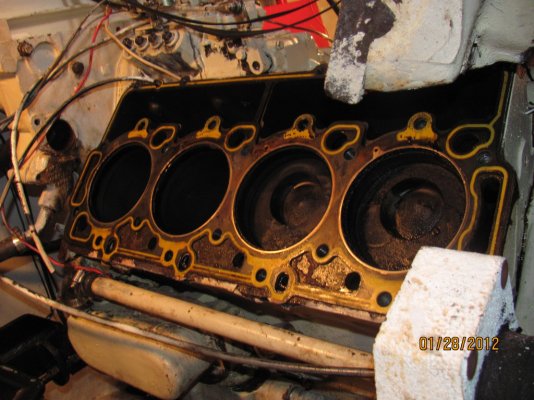skipperdude
Guru
When I did the rebuild of the top end I was hoping to take care of a slight knock.
When The motor was torn down I found that the number 8 cylinder had a sleeve in it and that the sleeve was about a 32nd of an inch below the surface of the block.
If you look at the nearest cylinder in the photo you can see more carbon built up around the top edge.
After I got it running I opened the injector and the knock went away.
She has been running with*that knock since 92 I guess it will just be that way.
Point being that if it sounds like an injector knock doesn't always mean it is.
Dang!!!
SD
When The motor was torn down I found that the number 8 cylinder had a sleeve in it and that the sleeve was about a 32nd of an inch below the surface of the block.
If you look at the nearest cylinder in the photo you can see more carbon built up around the top edge.
After I got it running I opened the injector and the knock went away.
She has been running with*that knock since 92 I guess it will just be that way.
Point being that if it sounds like an injector knock doesn't always mean it is.
Dang!!!
SD

